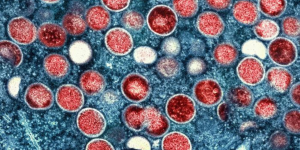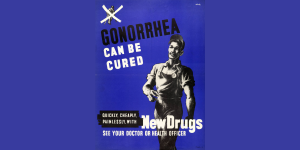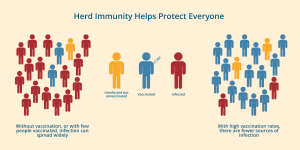
There Are Two New Drugs to Treat Gonorrhea
The FDA approved two new drugs to treat gonorrhea The new drugs—gepotidacin and zoliflodacin—are both new kinds of antibiotics and represent the first completely new treatment options in over thirty years.
Hepatitis:
Fast Facts
Hepatitis is an inflammation of the liver that can be caused by a group of viruses—hepatitis A, B, C, D and E. When hepatitis viruses damage liver cells, scar tissue is formed and those cells can no longer function. With fewer healthy liver cells, the body begins to show symptoms ranging from mild (such as fatigue) to more severe symptoms (such as mental confusion).
Although many cases of hepatitis are not a serious threat to health, the disease can sometimes become chronic (long-lasting) and may lead to liver failure and death. In many cases, though, viral hepatitis is a self-resolving illness—meaning it goes away on its own.
Sexual activity poses a different level of risk for each type of viral hepatitis, but is most closely associated with hepatitis B. Blood transfusion, IV needle sharing, and organ transplants can also transmit hepatitis.
Click on the hepatitis types below to learn more.
There is no cure for hepatitis A. Most people with severe infection will experience short-term illness and then recover completely. They are often told to rest for a few weeks and to avoid intimate contact with others. Once recovered, an individual is immune and will not get hepatitis A again.
Fortunately, complications from hepatitis A are rare, and few deaths result from it. It is not known to cause chronic infections. However, it can make some people very sick, and it is easily preventable through vaccination.
Hepatitis B virus is passed on through contact with infected body fluids such as semen, vaginal secretions, and blood. It is most often transmitted through sexual contact but can also be contracted when injecting drug users share needles and other injecting equipment. Mothers with hepatitis B can also pass the virus to their infants during birth.
Hepatitis B is not spread through food, water, sharing utensils, hugging, kissing, or by casual contact. However, certain items like razors, toothbrushes, nail clippers, and needles could pose a risk if they are contaminated with blood and should not be shared. The hepatitis B virus can survive outside the body for at least 7 days and is still infectious during that time. Any surfaces contaminated with blood should be cleaned with a solution of 1 part household bleach and 10 parts water.
In some people, hepatitis B will only cause a short-term (acute) infection causing mild illness for a few weeks or months. People with an acute infection often have few or no symptoms and will clear the virus on their own without treatment. Once a person has cleared the infection, they can’t be infected with hepatitis B again.
Not everyone will clear the virus, though, and will develop a serious long-lasting (chronic) infection lasting a lifetime. Chronic hepatitis B infection can cause complications such as cirrhosis (scarring of the liver) and even lead to liver cancer.
Hepatitis B is diagnosed by a blood test that detects hepatitis B antibodies in the blood. Blood tests can determine whether a person has acute or chronic hepatitis.
The good news is that hepatitis B is preventable through vaccination. A person can choose to be vaccinated and no longer have to worry about being infected with hepatitis B.
Other ways to prevent hepatitis B infection include using condoms and barrier methods during oral, anal and vaginal sex.
Hepatitis C is primarily transmitted by direct contact with blood. The most common way currently is through sharing of needles or other injecting equipment during intravenous drug use that have not been properly cleaned between users.
While not common, hepatitis C can be spread through vaginal or anal sex. According to the Centers for Disease Control and Prevention (CDC), having an STI or HIV, having sex with multiple partners, or rough sex appears to increase a person’s risk for hepatitis C. But again, sexual transmission of hepatitis C is not common.
CDC now recommends one-time hepatitis C testing of all adults (18 years and older) and all pregnant women during every pregnancy.
Hepatitis D is a viral infection of the liver that can only be acquired if a person has active hepatitis B. Hepatitis D is linked directly to hepatitis B, particularly to chronic hepatitis B infection. Vaccination against hepatitis B can protect people from hepatitis D infection.
Hepatitis E is primarily transmitted by contaminated drinking water and is not thought to be sexually transmitted.

The FDA approved two new drugs to treat gonorrhea The new drugs—gepotidacin and zoliflodacin—are both new kinds of antibiotics and represent the first completely new treatment options in over thirty years.

The American Cancer Society (ACS) released new recommendations for cervical cancer screening that focus on HPV testing and approve the use of self-collected samples. The recommendations also clarify the age at which screening should start and stop.

Public health officials in England announced that they have identified a new combined type of mpox. Tests show the virus was a unique mix of the two known types of mpox and experts are concerned about what this means for future spread of the virus.

A committee that advises the Centers for Disease Control and Prevention (CDC) made an alarming change to the recommendations for the hepatitis B vaccine that will leave some infants unprotected.

The Centers for Disease Control and Prevention (CDC) recently made striking changes to its online information about the connection between vaccines and autism that put the agency on the wrong side of science.

A new report from the World Health Organization (WHO) warns of rising levels of drug-resistant gonorrhea. The data comes from reported cases of gonorrhea in 12 countries across five WHO regions.

We’ve known for years that the HPV vaccine works. Now new research shows that widespread vaccination even protects those who haven’t gotten the shot. This study proves that it is possible to reach herd immunity for HPV.

A more serious type of mpox may be spreading California. Three people in the state were hospitalized with the virus.
ASHA believes that all people have the right to the information and services that will help them to have optimum sexual health. We envision a time when stigma is no longer associated with sexual health and our nation is united in its belief that sexuality is a normal, healthy, and positive aspect of human life.
ABOUT
GET INVOLVED
ASHA WEBSITES
GET HELP
© 2025 American Sexual Health Association